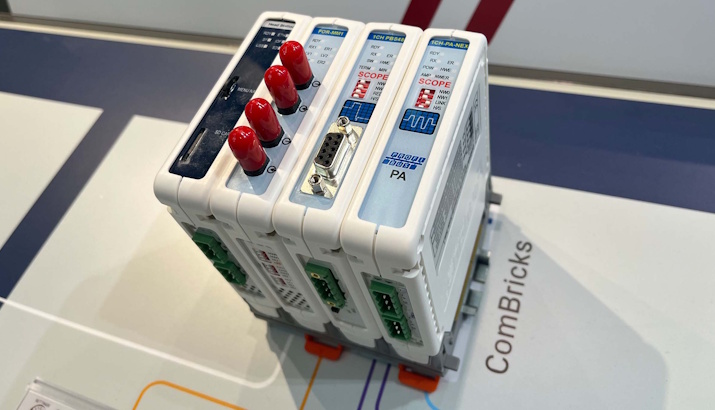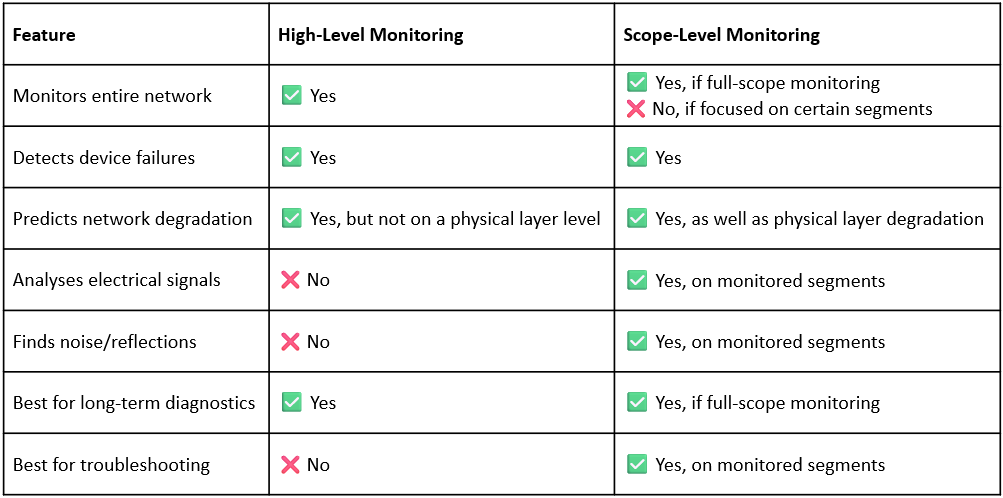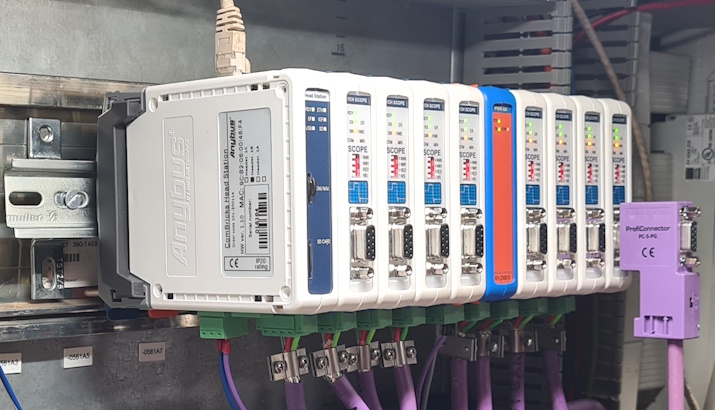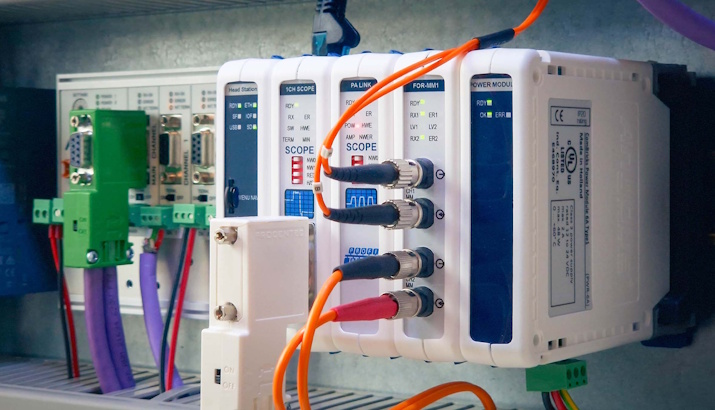
When implementing permanent PROFIBUS monitoring, two approaches exist: high-level and scope-level monitoring. Each has distinct capabilities, use cases, and trade-offs.
1. High-Level Permanent PROFIBUS Monitoring
(e.g., Anybus ComBricks Eco Monitoring Kit)
Overview:
- Monitors network errors and performance at a broad level.
- Tracks communication statistics, device statuses, and error trends for the entire network.
- Best implemented in conjunction with utilising the Anybus ProfiHub as the main repeating backbone of the plant networks. The ProfiHub supports diagnostics on a channel level that can be consolidated and reported by a high-level Anybus ComBricks.
- Provides remote access and real-time alerts on error statistics.
- Only needs to be installed at a single point in each network, usually installed by the Programmable Logic Controller (PLC) where there is also Information Technology (IT) network access.
Advantages:
- Continuous monitoring: Detects network faults, communication errors, and trends over time.
- Predictive maintenance: Helps prevent failures before they take place by logging warnings.
- Remote access and alerts: Allows teams to monitor from anywhere and receive automatic notifications.
- Minimal network impact: It is non-intrusive and does not disrupt network communication.
- Scalability: It can be deployed across large industrial networks.
- Cost-effective: Only a single Anybus ComBricks unit is required per network.
Disadvantages:
- No electrical analysis: Does not capture waveform distortions, signal quality or signal integrity issues in-depth.
- Can often not assist in identifying physical layer issues: Cannot always diagnose noise, grounding issues, impedance issues, or cable degradation.
- Plant requires additional tools and expert personnel onsite: The plant will require an additional Anybus ProfiTrace to diagnose physical layer issues and, in some cases, expert external resources to be dispatched to the site to assist with advanced fault finding.
Best Use Cases:
- Proactive maintenance and long-term reliability monitoring.
- A cost-effective permanent monitoring solution integrates good segmentation and architecture with the use of ProfiHubs.
- Large industrial plants need centralised diagnostics.
2. Scope-Level Permanent PROFIBUS Monitoring
(e.g., Anybus ComBricks – Standard or Advanced Monitoring Kits)
Overview:
- Analyses low-level physical signals (waveforms, signal quality voltages, and noise levels).
- Uses integrated oscilloscopes within each scope repeater to inspect signal quality at a segment level.
- Detects electrical issues such as reflections, noise, grounding faults, and weak signals.
- Typically installed at critical points in the network for continuous physical layer analysis. However, it can be installed throughout the networks on all segments for centralised and external resource fault-finding.
Advantages:
- Continuous monitoring: Detects network faults, communication errors, physical layer errors, and trends over time.
- Predictive maintenance: Helps prevent failures before they happen by logging warnings as well as capturing physical layer issues.
- Remote access and alerts: Allows teams to monitor from anywhere and receive automatic notifications. As well as access essential electrical analysis tools at a physical layer for fault identification.
- Deep signal-level insights: Identifies signal degradation, reflections, and electrical noise.
- Detects physical layer issues: It helps resolve cabling problems, shielding faults, interference issues, and connector failures.
- Essential for troubleshooting: It provides insights that high-level monitoring cannot detect.
Disadvantages:
- Expensive and complex: Requires specialised hardware and expertise to integrate within the network.
- Potential network disruption on failure: Some scope-based tools may interfere with normal operations of the network if the ComBricks unit fails, as it now forms part of the backbone.
Best Use Cases:
- Identifying and resolving physical layer issues (bad cables, terminations, or noise).
- Troubleshooting intermittent communication failures.
- Verifying installation quality (new PROFIBUS deployments).
- Utilising remote expert resources to assist with fault identification and correction advice without being deployed to the site.
Which One Should You Choose?

Ideal Strategy: Use Either Full-Scope or a combination of High-Level and Scope-Level
For comprehensive PROFIBUS monitoring, the best approach is to either use full-scope monitoring (all segments) or a combination of high-level monitoring (for network health and alerts) and scope-level monitoring (for deep troubleshooting when needed) on critical segments.
As a starting point and to minimise costs, consider introducing High-Level monitoring, along with Diagnostic ProfiHubs within the field as a first step in the journey of PROFIBUS permanent monitoring.








